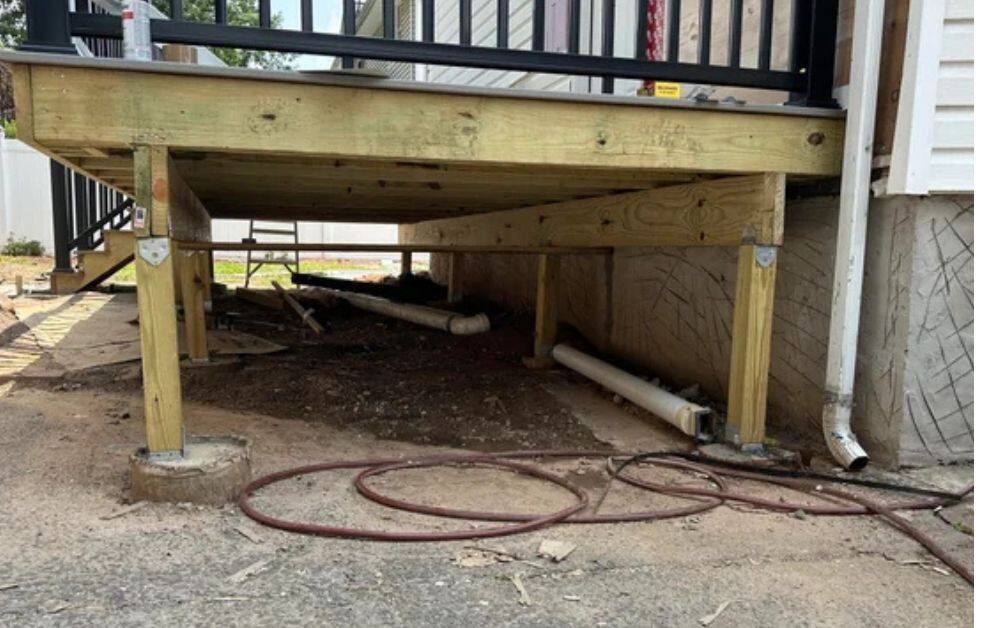Consider all factors discussed when selecting the right sonotube for a 6×6 post. The ideal size depends on your specific project requirements and local building codes. By considering the load, soil type, and environmental conditions, you can ensure that your structure will be stable and long-lasting.
Sonotubes are an effective solution for creating sturdy foundations. To optimize their performance, remember to follow best practices during installation. If you’re exploring alternatives, various methods can also work, depending on your needs.
Choosing the proper sonotube size is crucial for any construction involving 6×6 posts. It affects stability and durability over time. Make informed decisions based on carefully evaluating all aspects of your project.
Factors to Consider When Choosing the Ideal Size

Choosing the right size for your sonotube involves several important factors. First, consider the weight and height of your structure. A heavier or taller post may require a wider tube to ensure stability.
Another critical element is soil type. A larger diameter can provide better support against shifting when working with loose or sandy soil. In contrast, dense clay might allow for a smaller size without compromising strength.
Next, weigh local weather conditions. Areas prone to high winds or heavy snow loads will benefit from additional reinforcement from an appropriately sized sonotube.
Always check local building codes and regulations before making a decision. Compliance is essential not just for safety but also for avoiding costly fines during inspections down the line.
Common Sizes for 6×6 Posts

The size of your YouTube channel plays a crucial role in supporting structures. For 6×6 posts, common sonotube sizes typically range from 10 to 12 inches in diameter.
Local building codes and engineering requirements often influence the most frequently used dimensions. A 10-inch tube is suitable for lighter loads, while a larger diameter may be necessary for heavier applications.
When planning your project, it’s also essential to consider the depth of the tube. Standard lengths can vary from 3 feet up to several feet deep, depending on frost line considerations and soil type.
Using standardized sizes also helps ensure compatibility with concrete pouring techniques. This allows for better stability and strength in finished installations, ensuring your structure stands firm against time and weather events.
How to Determine the Right Size for Your Specific Project

Assess the load requirements when determining the right sonotube size for your 6×6 post. Consider what you will be placing on or around the post.
Next, consider soil conditions. Different types of soil provide varying levels of support. Sandy soils might require a larger diameter for stability than clay soils.
Remember frost lines if you’re in colder regions. Sonotubes need to extend below this line to prevent shifting during freeze-thaw cycles.
Always check local building codes and regulations. They may dictate specific dimensions based on safety standards or construction practices unique to your area. This information is crucial for ensuring your project meets all requirements without hiccups.
Tips for Using Sonotubes Effectively

Using nanotubes effectively requires some attention to detail. Start by ensuring the ground is level and stable. This helps prevent shifting during curing.
Before pouring concrete, apply a release agent inside the tube. Once set, it is easier to remove, saving you time and effort.
When mixing your concrete, follow the recommended water-to-cement ratios for optimal strength. Pour slowly to avoid air pockets that could weaken your post.
Consider using insulation around the sonotube to maintain heat if you work in colder temperatures. This aids in proper curing and ensures structural integrity.
Reinforce with rebar if necessary. It provides extra support for taller posts or those experiencing significant load stress. Each step matters when it comes to achieving lasting results with nanotubes.
Alternatives to Sonotubes for 6×6 Posts

If you’re looking for alternatives to nanotubes for your 6×6 posts, several options are available. One popular choice is concrete footings, which provide solid support and can be formed using wood or metal molds.
Another option is using pre-cast concrete piers. They come in various sizes and shapes, making installation straightforward while offering durability against the elements.
A simple gravel base may suffice for certain applications. It allows water drainage and provides some stability, but it may not be ideal for larger structures.
Also, ponder plastic post anchors or brackets designed to hold wooden posts securely without traditional forms.
Each alternative has pros and cons depending on your specific project needs, so evaluating them carefully before deciding what best meets your goals is essential.

